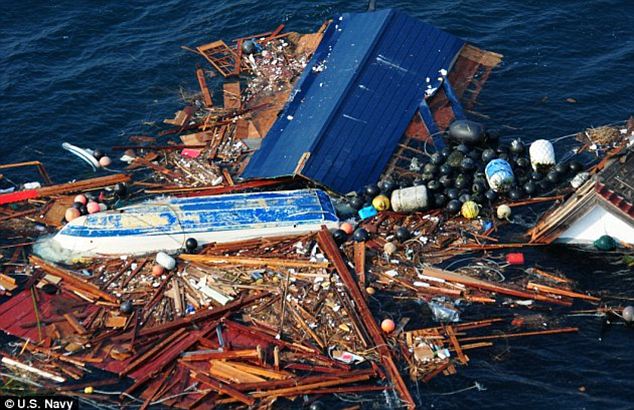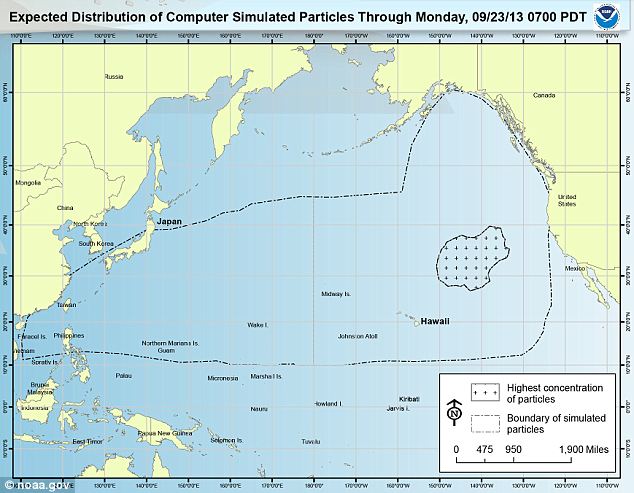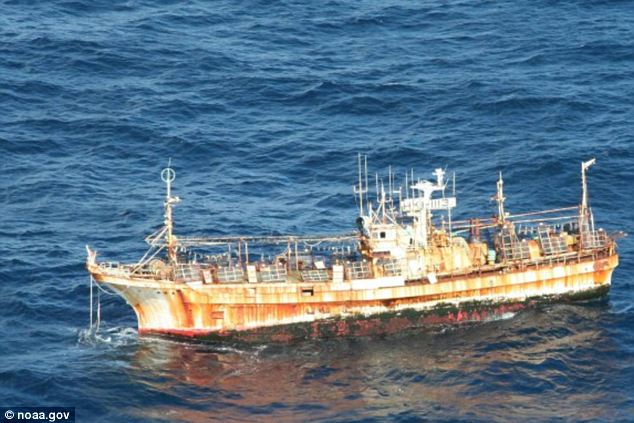- Part of the over one million tons of debris dispersed in the Pacific, the trash island is located northeast of the Hawaiian Islands
- The first documented tsunami debris to reach California arrived in April 2013
- Boats, a dock, a soccer ball, and motorcycle have all been identified on the West Coast as confirmed tsunami debris
Five million tons of wreckage - the remains of homes, boats, and other remnants of shattered lives in eastern Japan - were swallowed by the ocean that day in March, and more than one million tons of flotsam continues to head towards the west coast of the US.
While the first documented debris from the tragedy has already been found in California, scientists fear these new findings mean there could be a lot more to come and it might arrive all at once.


NOAA scientists add that a larger and less-concentrated debris field stretches from Alaska to the Philippines.
Some of the more mobile items have been documented as washing up on the coast of California as early as 2011.
In April, a 20ft boat ran aground at Crescent City, California. It was formally identified as a boat that belonged to the marine sciences program at Takata High School in the city of Rikuzentakata.
In all, 27 items from among more than 1,600 reports of debris have been firmly traced back to the tsunami, NOAA spokeswoman Keeley Belva said.
The confirmed items include a small boat found in Hawaii waters, large docks that have washed ashore in Washington state and Oregon, and a motorcycle that washed ashore off the coast of British Columbia.
A soccer ball found on an Alaska island with a student's name on it was also traced to the city of Rikuzentakata.
But distinguishing everyday trash from tsunami debris has proven difficult in most other cases.
Items that are confirmed as having come from the tsunami, like the soccer ball and boat, tend to have unique markings. It's far more difficult to distinguish between domestic and Japanese everyday wooden debris, for instance.
Geiger counters, which detect radiation, are no help in identifying debris. It was initially thought that the instruments might be able to pick up traces of radiation from the still-leaking nuclear reactor at Fukushima, but none of the floating debris has any detectable radioactivity.




Reader Comments
to our Newsletter